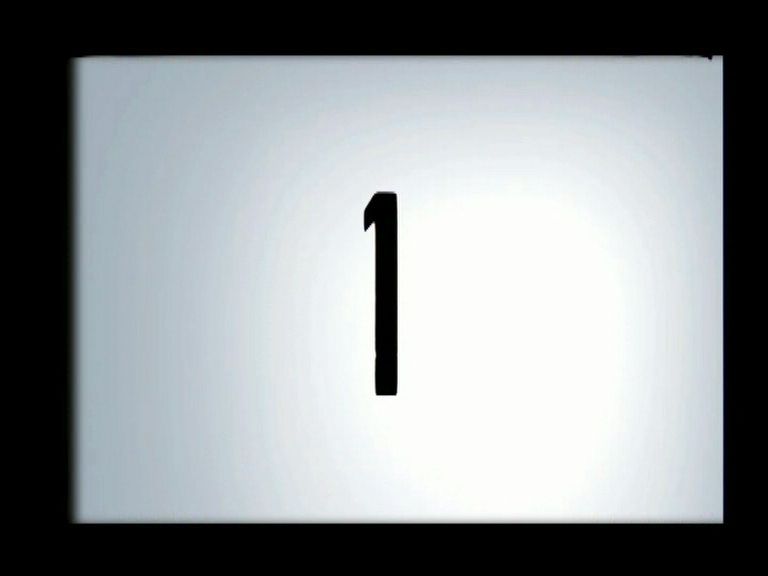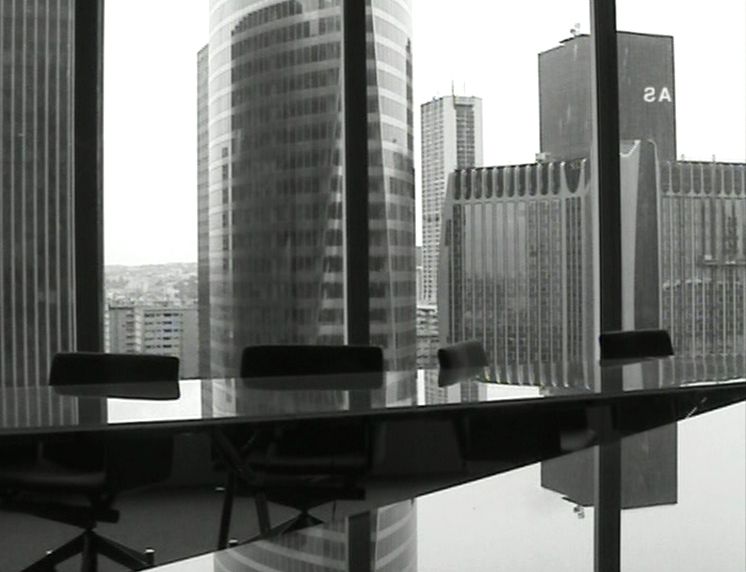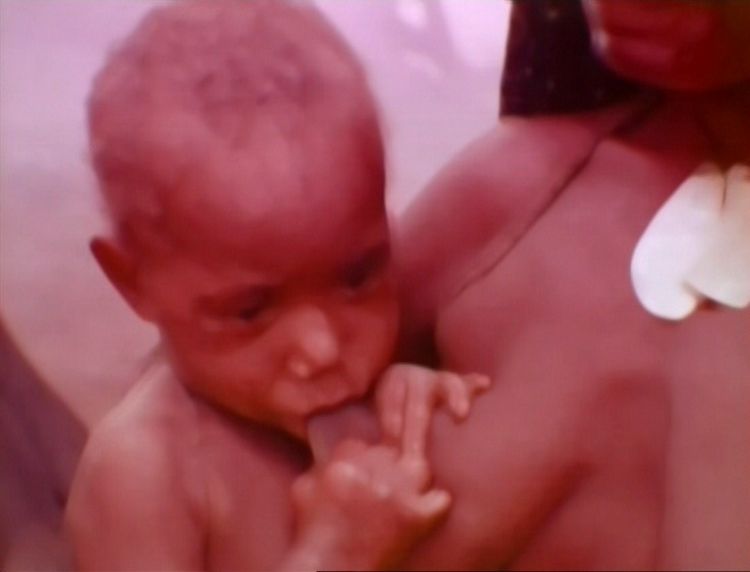Disembodied Voices @ Biennale de l'Image en Mouvement 2007

The voice-over in cinema and video represents the power the narrator has over the image and what that image stands for. The voice-over is what runs parallel to the image, endorses the image. Traditional voice-overs are embedded; they represent an authority. Disembodied Voices gathers five more intertextual videos from the argos catalogue in which voice-overs are used in a detached, idiosyncratic manner taking full advantage of the poetic irony between language and image, sight and sound.
Ken Kobland
Buildings and Grounds: The Angst Archive
2003, col., voice over in various languages & English running text, 44’27", US
Kobland’s quiet, meditative video is a philosophical investigation, a travelogue of sorts, and, ultimately, a probing essay-film in the tradition of Aleksandr Sokorov or late Godard. Buildings and Grounds pairs lingering, beautifully framed shots of urban scenes, industrial installations, deserts, and other evocative landscapes with a series of fragmentary ruminations drawn from film luminaries such as Fassbinder, Fellini, Bergman and Tarkovsky. Presented as a unified diaristic accompaniment to the image, the text comes to us both as English-language ’subtitles’ and, simultaneously, as voice-off appropriated from the original films. Floating over an image track virtually evacuated of all human form or movement, Kobland’s questions and digressions call up a beautiful and melancholy world.
Gert Verhoeven
The Blob
2001, col., English voice over, 21’00", BE
The Blob is a report on the World Pumpkin Confederation Contest in Buffalo, New York and Port Elgin, Ontario, Canada. The recording style is typical of a straight documentary but also extremely fragmentary, leaving the spectator without a clue on what it is about at first. Jerkily he keeps seeing the image of pumpkins, giant pumpkins. In all their squatness and flabbiness they are subject to a multitude of curious manipulations by masculine hands and fork trucks. Due to the lack of a storyline the attention of the spectator clings itself to formal details and actions: the various (un)shape(lines)and the colours of the pumpkins, the ingenious knot work of ropes and leather belts nipped in which they move about the screen, the endearing variety of pallets, mattresses, carpets and blankets on which they are displayed,… The comments and dubious questions of the voice-over in the distant background mainly serve as white noise. Yet, after some guesswork the viewer can make out he is watching a persiflage in which the pumpkins are put forward as artworks-in-progress, whereas the absurd ritual of the contest is a reference to the machinations of the accompanying art market. Oddly enough text and images are so far apart that the pumpkins remain essentially ponderous, plump objects. Almost comically they refuse to act as metaphors for sculptures, ideas or other manageable concepts.
Peter Downsbrough
Set [ing]
2003, b/w, English and French voice over, 4’19", BE
In Set [ing] the camera is situated in a closed, empty meeting room in an office building in the Paris business centre of La Défense. Using fluid camera movements the environment is explored and several relations emerge: between inside and out, horizontal and vertical, light and dark surfaces, between reflection and the scenery of the similar, high office buildings visible from the windows lining the room on one side. Short attention is paid to what takes place down in the street as well. The sound consists of fragments from an older sound work in which a woman pronounces names of objects and numerals.
Steve Reinke
The Mendi
2006, col., English voice over, 10’00", CA
Different ‘voices’ always occupy a Reinke tape. Though Reinkes voice-over is very personal, authorial identity is dispersed. He invites us to look reflexively – to ask hard questions about ourselves, our desires, and our relationships to images. The latest missive from the artist finds him recovering an errant CBC documentary and finding a new way to look at it by working on the soundtrack. He sees with his ears, with his mouth. He applies his mouth to this footage, he gives it mouth-to-mouth resuscitation, so now it can be seen again.
Michel Lorand
Epilog
2005, b/wh, German voice over, 8’55", BE
Lorand’s work is characterised by the visualisation of an inner reality and the examination of the relations between a literary text by Lorand and the image. Epilog is a postscript to his trilogy of video installations 3 Short Stories (2004-2005), in which women muse in voice-over on broken, impossible relations. In his visual strategy he makes symbolic use of the void. The accumulation of ineradicable images of people and being psychologically marked by them, and the memory of situations you carry physically inside you, are staged symbolically in a whiteness that is not one hundred percent virginal since it is transferred from film to video and is moreover framed by opening and closing credits which emphasise the medium itself.
Biennale de l’Image en Mouvement
5 rue du Temple
1201 Genève
Switzerland


